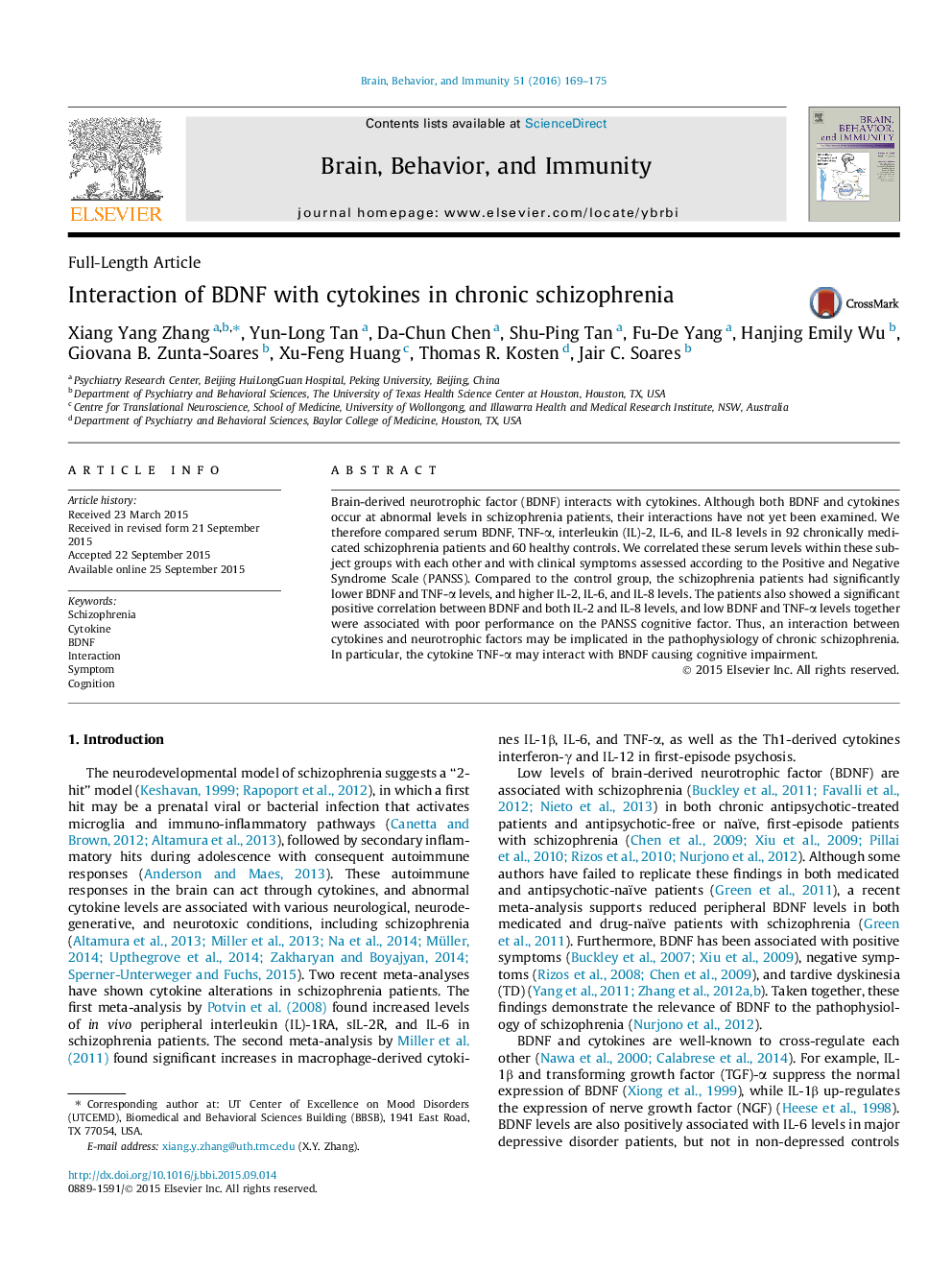| Article ID | Journal | Published Year | Pages | File Type |
|---|---|---|---|---|
| 922200 | Brain, Behavior, and Immunity | 2016 | 7 Pages |
•Serum BDNF, TNFα, IL-2, 6 and 8 levels were analyzed in 92 patients and 60 controls.•Patients exhibited decreased BDNF and TNFα, but increased IL-2, IL-6 and IL-8 levels.•A negative correlation of BDNF with IL-2 or IL-8 was noted only in patients.•The interaction of BDNF with TNFα was associated with the PANSS cognitive factor.
Brain-derived neurotrophic factor (BDNF) interacts with cytokines. Although both BDNF and cytokines occur at abnormal levels in schizophrenia patients, their interactions have not yet been examined. We therefore compared serum BDNF, TNF-α, interleukin (IL)-2, IL-6, and IL-8 levels in 92 chronically medicated schizophrenia patients and 60 healthy controls. We correlated these serum levels within these subject groups with each other and with clinical symptoms assessed according to the Positive and Negative Syndrome Scale (PANSS). Compared to the control group, the schizophrenia patients had significantly lower BDNF and TNF-α levels, and higher IL-2, IL-6, and IL-8 levels. The patients also showed a significant positive correlation between BDNF and both IL-2 and IL-8 levels, and low BDNF and TNF-α levels together were associated with poor performance on the PANSS cognitive factor. Thus, an interaction between cytokines and neurotrophic factors may be implicated in the pathophysiology of chronic schizophrenia. In particular, the cytokine TNF-α may interact with BNDF causing cognitive impairment.
